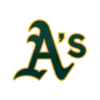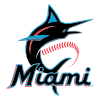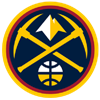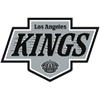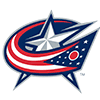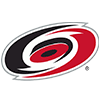This will be my last article before I get to work on the big late-May update to the top-400 prospect rankings. I've obviously been following the happenings in the minors closely, watching video, talking with sources and analyzing stats, but I have yet to start actually moving prospects around on my private spreadsheet.
I know many of you have asked something along the lines of, "who will be a few big risers on the next update?" I'm afraid everyone will have to just find out at the same time — I'm shooting for Tuesday, May 24.
In the meantime, we have some hard-hit data to analyze. This is one of the cooler tools we have on the site. It does not include rookie level hitters and there are also some full-season hitters who do not have Sports Info Solutions I.D.'s, and therefore can't be tracked, but it covers a large enough percentage of full-season hitters that we can analyze it and draw conclusions.
A few things to keep in mind:
- The younger a hitter is, the less important it is that they have an impressive hard-hit rate.
- Shortstops, center fielders and second baseman are not necessarily expected to rate well on hard-hit data. Those players often bring an element of speed to the game and are often hit-over-power, so while it's great when they regularly hit the ball hard, that's not always the expectation.
- Hitting the ball hard is important, but it's only part of the equation. Groundball rate,
This will be my last article before I get to work on the big late-May update to the top-400 prospect rankings. I've obviously been following the happenings in the minors closely, watching video, talking with sources and analyzing stats, but I have yet to start actually moving prospects around on my private spreadsheet.
I know many of you have asked something along the lines of, "who will be a few big risers on the next update?" I'm afraid everyone will have to just find out at the same time — I'm shooting for Tuesday, May 24.
In the meantime, we have some hard-hit data to analyze. This is one of the cooler tools we have on the site. It does not include rookie level hitters and there are also some full-season hitters who do not have Sports Info Solutions I.D.'s, and therefore can't be tracked, but it covers a large enough percentage of full-season hitters that we can analyze it and draw conclusions.
A few things to keep in mind:
- The younger a hitter is, the less important it is that they have an impressive hard-hit rate.
- Shortstops, center fielders and second baseman are not necessarily expected to rate well on hard-hit data. Those players often bring an element of speed to the game and are often hit-over-power, so while it's great when they regularly hit the ball hard, that's not always the expectation.
- Hitting the ball hard is important, but it's only part of the equation. Groundball rate, pull rate, strikeout rate, walk rate, age/level are all very important things to look at in addition to hard-hit rate. For instance, if a player is striking out 35% of the time and/or hitting the ball on the ground 55% of the time, then their hard-hit rate matters less.
Hard-Hit Standouts
Francisco Alvarez, C, Mets

With Alvarez, this is kind of a given. That 21.2 Soft% is mildly concerning, which coupled with his 27.4 K% explains why he is hitting .213. He's a good catching prospect, but he's not a blue-chip overall prospect for dynasty.
Triston Casas, 1B, Red Sox

Casas only had a 22.9 Hard% last season, so it's good to see that he has come into his own in that department. I thought Chaim Bloom had some illuminating comments in this article earlier in the week — not just as it pertains to Casas, but the challenges all Triple-A hitters face when making the jump to the majors.
Austin Wells, C, Yankees

Look at that Soft%! I've been high on him for a while and Wells has put up ridiculous numbers in a return trip to High-A. However, as a bat-first catcher/DH who turns 23 in July, we're not going to learn anything new about him until he gets the bump to Double-A.
Brett Baty, 3B/OF, Mets

Baty's exit velocities are the main thing cited by his proponents, so this is no surprise. By far the most encouraging aspect to his season is his 44.1 GB%, as it'd been well over 50% in the past. I still think he's overrated in some circles, especially for AVG leagues.
Gunnar Henderson, 3B/SS, Orioles

Henderson has been making remarkable swing decisions as a 20-year-old at Double-A, boasting a 22:29 K:BB in 28 games. He has played more games at third base than shortstop this year, but it's looking like his bat may profile anywhere.
Bo Naylor, C, Guardians

Scouts seemed befuddled by Naylor's 2021 production (69 wRC+), and thus far he has righted the ship in a return trip to Double-A. He has more walks (19) than strikeouts (19) and is 7-for-7 on stolen-base attempts. At the very least he has regained relevancy in mid-sized dynasty leagues.
Juan Yepez, 1B/DH, Cardinals

This is one where it would have been a red flag if Yepez didn't show up, given his defensive home and age (24). He's a fine prospect, but I think this is a great chance to sell high in dynasty, assuming someone in your league is a full believer.
Cal Mitchell, OF, Pirates

Mitchell has really upped his dynasty value this season, now looking like one of Pittsburgh's best long-term options in the outfield. He has basically done everything at a career-best rate, including striking out less than 13% of the time and being 6-for-6 on stolen-base attempts through 25 games.
Shea Langeliers, C, Athletics

Langeliers is on the short list of most intriguing stash candidates in two-catcher leagues. He has been better than Yepez, another 24-year-old, in almost every metric this year at Triple-A, for what it's worth, and has established himself as a one of the best catching prospects in baseball.
Corbin Carroll, OF, Diamondbacks

I mentioned up top that center fielders typically won't show up among hard-hit leaders, but they will if they are the No. 1 prospect in baseball, which Carroll probably will be on the upcoming update.
Miguel Vargas, 3B/2B/1B, Dodgers

Vargas has been fantastic this year at Triple-A, currently sporting a 23:23 K:BB in 149 PAs while using the whole field and keeping the ball in the air. His bat is going to carry the day, and while playing time might not open up this season, he might be able to have initial success if it does.
Jack Suwinski, OF, Pirates

I wasn't big on Suwinski coming into the year, but I think the Pirates did well getting him from San Diego in the Adam Frazier trade. He has been solid since getting the call to the majors and there's obviously some thump in the bat. His 10.8 Soft% at Double-A was also quite impressive.
Coby Mayo, 3B, Orioles

Mayo has been league average through his first 27 games at High-A, striking out at a career-worst 22.7% clip and walking at a career-low 8.4% clip. It's very encouraging, however, that he is routinely hitting the ball this hard with a 14.5 Soft%, especially since he is hitting it to the opposite field over 40% of the time.
Will Wilson, SS/2B/3B, Giants

My old flame! Wilson is having his best season as a pro thus far in a return to Double-A. He turns 24 in July and has a 26.5 K%, so we want to be careful here, but there are a lot of encouraging signs beyond how hard he is hitting the ball. His .261 ISO, 16.9 BB% and 48.9 FB% are all at career-best levels.
Matt McLain, SS, Reds

This quality of contact for a 5-foot-11 (generously) shortstop in his first taste of Double-A is pretty remarkable. McLain's K% has been trending in the wrong direction over the past couple weeks, otherwise he'd probably be a top-20 prospect on the upcoming update.
Vinnie Pasquantino, 1B/DH, Royals

We know Pasquantino's approach and contact skill are elite against Triple-A pitching, but he still needs to hit for power to profile as a 1B/DH, and he's doing so. Pasquantino, Mitchell and Langeliers might be the three best hitter stashes/FAAB targets going forward in redraft leagues.
Cause For Concern?
Here are the current top-400 prospects with at least 50 plate appearances and a Soft% over 25 percent:

Some of these guys are great prospects, and a couple of them even have green hard-hit rates above 30%, but I think it's good to recognize that they are making weak contact on a pretty regular basis. That's not the end of the world, especially for guys like Liover Peguero, Sal Frelick and Felix Valerio, who aren't supposed to be hitting for impact power anyway. It is worth considering, however, that Oneil Cruz, Noelvi Marte and Elly De La Cruz are thought of as great prospects despite questionable hit tools, so it's not surprising that all three show up in this query.










